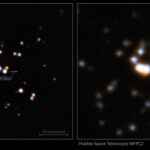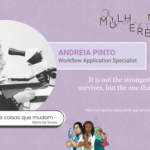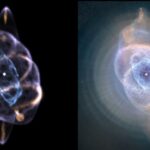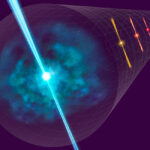This Universe’s most massive star just said “cheese!”
Located in the Tarantula Nebula at about 160,000 light-years from us, R136a1 is the most massive star we know across the whole Universe. Using the Gemini South telescope in Chile, astronomers recently managed to get the sharpest image ever made of the gigantic star. The image suggests that maybe such…
NASA Confirms DART Mission Impact Changed Asteroid’s Motion in Space
Versão portuguesa disponível aqui Analysis of data obtained over the past two weeks by NASA’s Double Asteroid Redirection Test (DART) investigation team shows the spacecraft's kinetic impact with its target asteroid, Dimorphos, successfully altered the asteroid’s orbit. This marks humanity’s first time purposely changing the motion of a celestial object…
Soapbox Science Lisbon 2022 – Empowering Women in STEM
Soapbox Science comes on October 15th for the third time to Portugal, Lisbon. As a premier we will be found for the first time live in person at FICA Oeiras 🇵🇹 Versão portuguesa disponível aqui Over the last decade large investment in science outreach and promotion of careers in Science,…
SoapBox Science Lisbon 2022 – Article by Inês Navalhas
Article by Inês Navalhas 🇵🇹 Versão portuguesa disponível aqui Science communication: a bridge between the past and the future of science What role can science communication play in peoples’ lives? Image: Tom Dunne, American Scientist 2015. In history, there are several examples of the use and importance of science…
SoapBox Science Lisbon 2022 – Article by Diana Marques
Article by Diana Marques 🇵🇹 Versão portuguesa disponível aqui The key ingredient of a recipe I was raised in a big family. I have four brothers, and eating together has always been a time for bonding. We ate, enjoyed ourselves, and got caught up in conversations during that time. Interestingly,…
SoapBox Science Lisbon 2022 – Article by Andreia Pinto
Article by Andreia Pinto 🇵🇹 Versão portuguesa disponível aqui It is not the strongest of the species that survives, but the one that is most adaptable to change. Charles Darwin There is no recipe for life. No perfect timing. Life just happens. And the more we move the more…
What’s like The Sun and The Earth – only Redder and Heavier?
Astronomers have discovered a super-Earth – planets that are much like our Earth but heavier – near the habitable zone of a red dwarf star, only 37 light-years from us. That's really really close to our planet in astronomical terms! Schematic diagram of the newly discovered Ross 508 planetary system.…
Cat’s Eye Nebula seen in 3D
Versão portuguesa disponível aqui Researchers have created the first computer-generated three-dimensional model of the Cat's Eye Nebula, revealing a pair of symmetric rings encircling the nebula’s outer shell. The rings’ symmetry suggests they were formed by a precessing jet, providing strong evidence for a binary star at the centre of…
Webb takes its first exoplanet image
Versão portuguesa disponível aqui For the first time, astronomers have used the NASA/ESA/CSA James Webb Space Telescope to take a direct image of an exoplanet. The exoplanet is a gas giant, meaning it has no rocky surface and could not be habitable. The image, as seen through four different light filters,…
Explosions help us measure distances in the Universe
How do astronomers measure large distances in the far away corners of the Universe? An international team led by Maria Dainotti – an Assistant Professor at the National Astronomical Observatory of Japan (NAOJ) – has just found a new way to do it. Conceptual image of this research: using Gamma…











